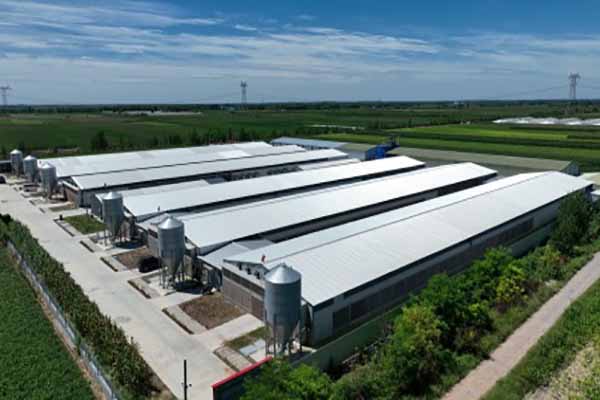How to Start a Chicken Layer Farm in the Philippines: A Comprehensive Guide
Time : 2025-04-18
Starting a chicken layer farm in the Philippines can be a rewarding venture. With the growing demand for eggs in the country, it’s a business opportunity that many aspiring entrepreneurs are keen to explore. Whether you’re a seasoned farmer or a beginner, this guide will walk you through the essential steps to kickstart your chicken layer farm journey.
1. Research and Planning
Before diving into the business, thorough research and proper planning are crucial. Here’s what you need to consider:
1.1 Market Research
Understand the market demand for eggs in your area. Analyze the competition and identify potential gaps in the market that you can exploit.
1.2 Business Plan
Create a detailed business plan that outlines your goals, target market, budget, and projected sales. This will serve as a roadmap for your farm’s growth.
1.3 Legal Requirements
Research the legal requirements for starting a farm in the Philippines. This includes obtaining the necessary permits and licenses from local government units and the Department of Agriculture.
2. Choosing the Right Location
The location of your farm can significantly impact its success. Consider the following factors when selecting a site:
2.1 Accessibility
Choose a location that is easily accessible to suppliers and buyers. Proximity to transportation hubs can reduce costs and improve efficiency.
2.2 Land Availability
Ensure that the land is suitable for farming. It should have good drainage, be fertile, and have access to water sources.
2.3 Zoning Laws
Check the local zoning laws to ensure that the area is zoned for agricultural use.
3. Building the Infrastructure
Once you’ve secured the location, it’s time to build the infrastructure for your farm:
3.1 Chicken Coops
Construct sturdy and well-ventilated coops. Ensure that they are large enough to accommodate the number of chickens you plan to raise. Consider factors like temperature control, nesting boxes, and roosting areas.
3.2 Water and Feed Facilities
Set up reliable water and feed facilities. Chickens require clean water and a balanced diet to stay healthy and productive.
3.3 Waste Management
Implement a waste management system to handle chicken droppings and other waste products. This is crucial for maintaining hygiene and preventing disease.
4. Purchasing Chickens
Selecting the right breed of chickens is vital for your farm’s success. Here’s what to consider:
4.1 Breed
Choose a breed that is well-suited to the local climate and has a high laying rate. Some popular breeds in the Philippines include the Lohmann Brown and the Hy-Line Brown.
4.2 Health
Ensure that the chickens are healthy and free from diseases. Purchase them from a reputable supplier.
4.3 Age
Chickens start laying eggs at around 18 weeks of age. Plan your purchases accordingly to ensure a steady supply of eggs.
5. Farm Management
Effective farm management is key to the success of your chicken layer farm:
5.1 Feeding and Watering
Provide a balanced diet and clean water to your chickens. Monitor their health and adjust their diet as needed.
5.2 Health and Disease Prevention
Implement a disease prevention program. Regularly clean and disinfect the coops, and vaccinate your chickens against common diseases.
5.3 Egg Collection
Collect eggs regularly to maintain freshness and prevent spoilage.
6. Marketing and Sales
Develop a marketing strategy to reach your target market:
6.1 Distribution Channels
Identify the best distribution channels for your eggs. This could include selling directly to retailers, restaurants, or through online platforms.
6.1 Branding
Create a strong brand identity for your farm. This will help you stand out in the market and build customer loyalty.
6.2 Pricing Strategy
Set competitive prices for your eggs while ensuring that you’re making a profit.
7. Financial Planning
Manage your finances effectively to ensure the sustainability of your farm:
7.1 Budgeting
Create a detailed budget that includes all your expenses and income. This will help you track your farm’s financial performance.
7.2 Savings and Investment
Set aside a portion of your profits for savings and future investments in your farm.
Conclusion
Starting a chicken layer farm in the Philippines requires thorough planning, dedication, and attention to detail. By following these steps, you can lay a solid foundation for a successful farming business. Remember, patience and persistence are key to overcoming challenges and achieving your goals.












